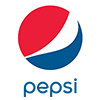Use of Cable Trays in Oil and Chemical Refineries

16-April-2022 || By: Admin
The need to protect control cables and control valves from fire is one of the most important fire protection requirements for refineries and other offshore locations. There are several options available, including fire blanket systems, calcium silicate board, and flexible mats that absorb heat in the event of a fire. All of the available cable fire protection solutions provide distinct advantages, and refinery operators must weigh the benefits and drawbacks of each to determine which is best for a given application.
Separation provides protection.
"Fireproofing Practices in Petroleum and Petrochemical Processing Plants," API 2218, provides guidelines for "selecting, applying, and maintaining fire-proofing materials that are designed to limit the extent of fire-related property loss in the petroleum and petrochemical industries." A key goal is to separate refinery operations into fire zones that can be isolated and safely shut down so that if a fire breaks out, the flow of the product being refined does not feed the fire.
The API 2218 guidelines include a number of protective measures, such as fireproofing to improve the capacity of equipment and its support structure in the event of a fire. Another critical measure is to protect critical operating systems when they are exposed to fire.
The standard requires control valves that turn off the flow in the event of a fire, as well as control cables that signal when to shut off the fuel, to protect the refinery and its components. According to API standards, the control valve and cable must be able to withstand a fire for at least 20 minutes, but up to 30 minutes in some cases.
Cable tray systems
designed to protect cables from fire include the following:
- Fireproofed cable tray systems that have been certified by the vendor.
- Standard cable trays that are completely surrounded by insulating, fire-resistant fiber mats or
endothermic mats.
- Cable trays with calcium silicate insulation panels and calcium silicate sleepers to keep cables
away from the tray's bottom.
-Trays with galvanized sheet metal exterior surfaces coated with mastic or intumescent fireproofing
material.
Before installation, the material used to provide 30-minute fire protection against a hydrocarbon pool fire for grouped electrical cables inside conduit or a cable tray must be tested according to ASTM E 1725-95. (Standard Test Methods for Fire Tests of Fire-Resistive Barrier Systems for Electrical System Components). The method is based on a simulation of the type of fire that could occur at a refinery: one that reaches 1500°F in three minutes and 1850°F to 2150°F in five minutes. The testing is done in accordance with the ASTM E 1529 hydrocarbon pool fire temperature-curve conditions (50,000 +/-2,500 BTU/ft2hr).
Positive pressure is applied to at least half of the test assembly. The thermocouples are peened every six inches on both rails of the cable tray and every six inches on a bare copper wire centered in the tray. The cable tray is designed to be empty of cables, allowing for zero to 100 percent cable loading. When one "set" reaches an average temperature rise of 250°F or any single thermocouple reaches a temperature rise of 325°F, the system fails.
Options for Meeting Fire Protection Requirements
There are numerous options for protecting control valves and grouped electrical cables from extended fire exposure while maintaining control of equipment operated by the cables.
Wrapping cable trays and conduits with a non flammable, high-temperature-resistant insulating blanket is one option. The fire exposure period is proportional to the thickness of the wrap, and the material is typically weatherproofed in the field.
The FireMaster 607 Blanket , for example, is a flexible blanket made of high temperature fibers that is rated for applications up to 2192°F. The core fibers are made with the patented Superwool fiber technology, which employs a low bio-permanent insulating wool, lowering the risk for installers.
The blanket wrap system is made up of a single layer of 2-inch, 8-pound-per-cubic-foot material and is intended for cable trays and conduits up to 12-inch in diameter. The lightweight flexible blanket wrap is simple to cut, which reduces installation issues in complex designs. A straightforward wrap design allows for simple re-entry for cable modifications. To provide superior handling strength for installation, the insulation is supplied with full encapsulation in a glass fiber reinforced foil and polypropylene (FSP) facing as standard. Weather and mechanical abuse protection are optional extras. When compared to composite products or rigid board installations, the FireMaster fire protection system results in significant material and labor savings. It is also lightweight, which eliminates the need for additional support structures and their associated costs.
Calcium silicate board, an inorganic, non-combustible, high-temperature insulation, is another option. The material can provide some weather resistance and durability in many environments, but it is heavy (around 54 pounds per cubic foot), which, combined with the cutting and fastening methods required, makes installation relatively difficult. Furthermore, while the board itself is relatively inexpensive, the waste from cutting as well as the additional labor required for cutting and fastening make installation costly. It also responds less well to complex cable tray runs.
An endothermic mat (e-mat) is a third option that protects structural steel, cable trays, and conduit circuits by chemically absorbing heat energy and preventing heat penetration. The product requires three to five layers to be installed, resulting in increased weight and material costs – up to five to ten times higher than insulation or board alternatives. These multilayer solutions also incur additional labor expenses. Flexible mat solutions, on the other hand, are not as insulating, so they are frequently used to protect power cables, which generate heat. The other options discussed are better suited for use in protecting control cables, which do not generate a lot of heat.
The goal of petroleum industry standards is to separate refinery fire zones by a sufficient distance so that if a fire breaks out, it is possible to cut off the flow of chemicals, oil, or gas to the affected area and prevent the fire from feeding itself. In that case, the cables and valves that control the shut-off valves must be adequately safeguarded. When deciding on the best options for maintaining control over these components, consider total material costs, labour and installation costs, durability in the specific facility's location, and any associated differences in long-term maintenance and replacement costs.
We are Pune based
manufacturers of cable trays
, exporter andsupplier of cable trays in India
, raceways, draw boxes & industrial fabrications. The company has expertise in manufacturing products like perforated cable trays,ladder type cable trays
, trunking cable trays / raceways, basket trays / wire mesh cable trays, junction boxes, raceways boxes and their accessories such as bends, elbows, tees, cross, reducers, and many more. Hutaib Electricals is located at Burhani Industrial Area in Pune which is a renowned industrial area.Our company has gained a reputation in the market for its matchless trunking









